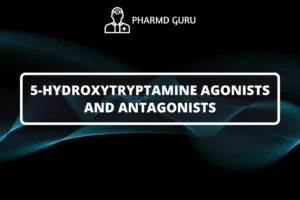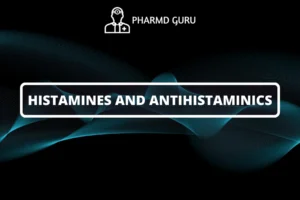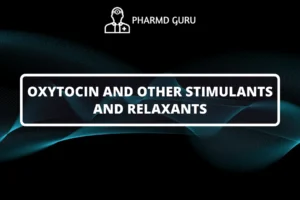Angina, characterized by chest pain or discomfort, is a common symptom of underlying heart disease. Anti-anginal drugs play a vital role in the management of angina by relieving symptoms, improving blood flow to the heart, and reducing the workload on the heart muscle. In this article, we will delve into the pharmacology of anti-anginal drugs, their mechanisms of action, different classes of drugs, and their usage considerations.
SCROLL DOWN TO THE BOTTOM OF THIS PAGE FOR ACTUAL NOTES.
TABLE OF CONTENTS:
- Introduction
- Mechanism of Action
- Classes of Anti-anginal Drugs
- Organic Nitrates
- Beta Blockers
- Calcium Channel Blockers
- Ranolazine
- Considerations in Usage
Introduction
Anti-anginal drugs are medications used to alleviate the symptoms of angina, improve blood flow to the heart, and enhance cardiac function. By targeting different mechanisms in the body, these drugs help reduce chest pain, prevent or limit the frequency of angina attacks, and enhance the quality of life for individuals with angina.
Mechanism of Action
Different classes of anti-anginal drugs exert their effects through various mechanisms:
Organic Nitrates
Organic nitrates, such as nitroglycerin, work by releasing nitric oxide (NO) in the body. Nitric oxide causes relaxation of the smooth muscles in blood vessels, leading to vasodilation and improved blood flow to the heart. This helps relieve angina symptoms by reducing the workload on the heart and increasing oxygen supply.
Beta Blockers
Beta blockers, such as metoprolol and propranolol, block the action of adrenaline (epinephrine) and noradrenaline (norepinephrine) on beta-adrenergic receptors. By doing so, beta blockers reduce heart rate, cardiac output, and blood pressure, thereby reducing the oxygen demand of the heart and relieving angina symptoms.
Calcium Channel Blockers
Calcium channel blockers, including amlodipine and verapamil, inhibit the entry of calcium into the smooth muscle cells of blood vessels and the heart. This leads to relaxation of blood vessels, decreased cardiac contractility, and improved blood supply to the heart. By reducing the workload on the heart, calcium channel blockers help alleviate angina symptoms.
Ranolazine
Ranolazine is a unique anti-anginal drug that works by inhibiting the late sodium current in cardiac cells. This mechanism helps improve myocardial oxygen utilization and reduces the frequency of angina attacks.
Classes of Anti-anginal Drugs
The following classes of anti-anginal drugs are commonly prescribed:
- Organic Nitrates: Nitroglycerin, Isosorbide dinitrate, Isosorbide mononitrate
- Beta Blockers: Metoprolol, Propranolol, Atenolol
- Calcium Channel Blockers: Amlodipine, Verapamil, Diltiazem
- Ranolazine
Each class of anti-anginal drugs has its own unique mechanism of action and considerations in usage. The choice of medication depends on factors such as the individual’s medical history, symptoms, and overall health.
Considerations in Usage
When using anti-anginal drugs, certain considerations should be kept in mind:
- Individualized Treatment: Treatment plans should be tailored to the individual’s specific needs, taking into account factors such as the severity of angina, coexisting medical conditions, and potential drug interactions.
- Monitoring and Dose Adjustments: Regular monitoring of symptoms and periodic evaluation by healthcare professionals help determine the effectiveness of the medication. Dosage adjustments may be necessary to achieve optimal symptom control.
- Adherence to Medication: Consistent and proper use of anti-anginal drugs is crucial for symptom relief and improved cardiac function. It is important to follow the prescribed dosage and frequency as advised by healthcare professionals.
- Lifestyle Modifications: Anti-anginal drugs are often used in conjunction with lifestyle modifications, including a heart-healthy diet, regular exercise, stress reduction, smoking cessation, and weight management. These lifestyle changes can complement the effects of medication and contribute to better cardiovascular health.
ACTUAL NOTES:




